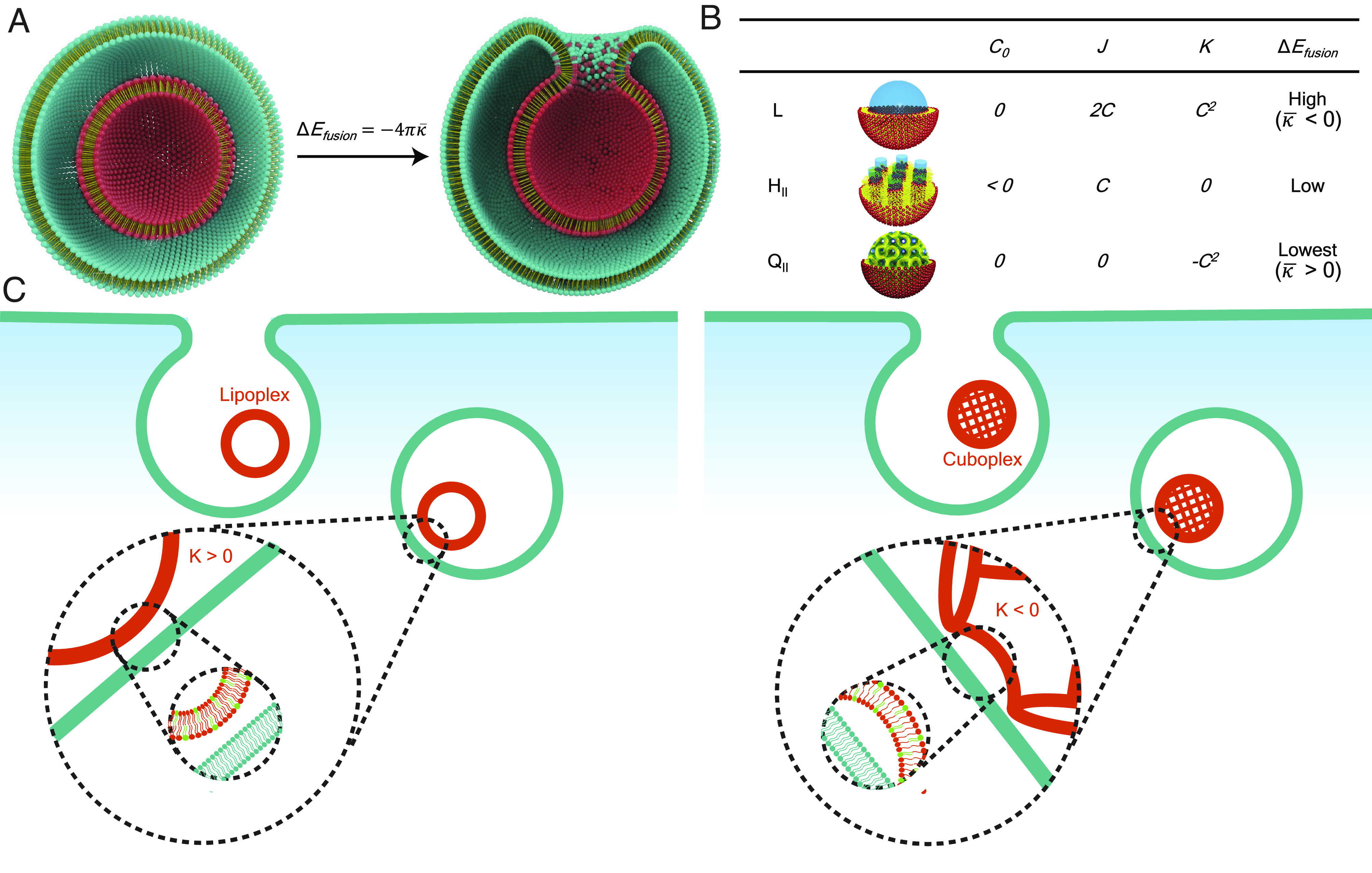Fig. 1.

Schematic representation of the cell entry of LNP–RNA complexes. (A) LNPs (red particle) enter the cells via endocytosis and are entrapped in the endosome (teal vesicle). Illustration credits: Alex D. Jerez, Imaging Technology Group at the Beckman Institute University of Illinois, Urbana-Champaign, IL. LNP–endosome membrane fusion involves a topological transformation of activation elastic energy . (B) LNPs of different nanostructures (L, HII, and QII) have distinct spontaneous curvature C0, total curvature J, and Gaussian curvature K properties. (C) The escape of LNPs from endosomal entrapment will be enhanced by lowering the energetic barrier for fusion and fusion pore formation with the endosomal membrane for which QII LNPs should have preferential properties.
